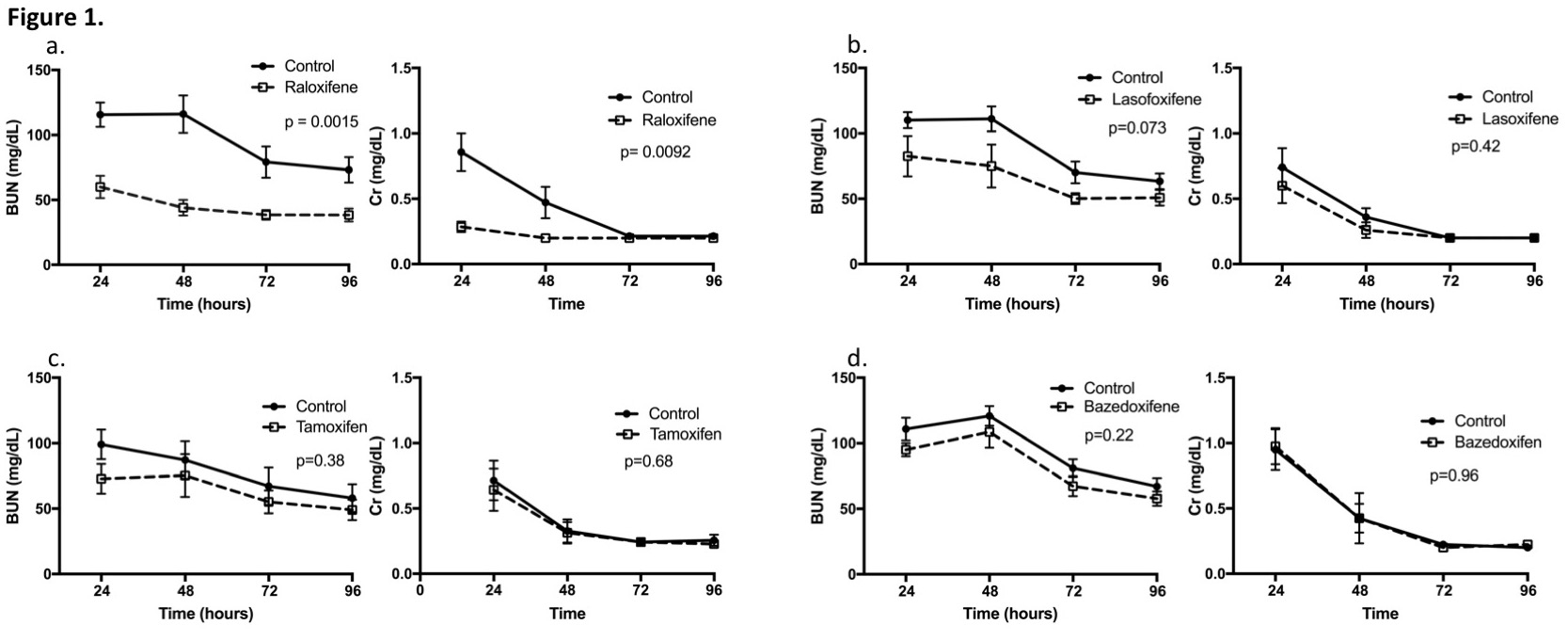Modulation of Ischemia Reperfusion Injury in Renal Transplantation Using Selective Estrogen Receptor Modulators
1Hospital of the University of Pennsylvania, Philadelphia, PA, 2Children's Hospital of Philadelphia, Philadelphia, PA
Meeting: 2020 American Transplant Congress
Abstract number: A-374
Keywords: Renal ischemia
Session Information
Session Name: Poster Session A: Ischemia Reperfusion & Organ Rehabilitation
Session Type: Poster Session
Date: Saturday, May 30, 2020
Session Time: 3:15pm-4:00pm
 Presentation Time: 3:30pm-4:00pm
Presentation Time: 3:30pm-4:00pm
Location: Virtual
*Purpose: Renal ischemia reperfusion injury (IRI) is a major contributor to delayed graft function (DGF) in kidney transplantation. We previously demonstrated lower rates of DGF among female renal transplant recipients in the UNOS registry, and using a murine model, we showed improved IRI tolerance with administration of supplemental 17β-estradiol (E2) in both warm and cold ischemia. While E2 may have significant therapeutic potential in renal transplantation, its use may be limited by off target effects, including its well-described pro-tumoral effects in the breast and endometrium as well as increased thromboembolic risk. We have investigated the impact of selective estrogen receptor modulators (SERMs) which act as estrogen receptor agonists in some tissues and antagonists in others potentially decreasing the risk of the aforementioned complications while maintaining the protection from IRI seen with E2.
*Methods: Female C57BL/6 (B6) mice were treated with either Raloxifene (10 mg/kg), Lasofoxifene (10 mg/kg), Tamoxifen (10 mg/kg), Bazedoxifene (10 mg/kg), or vehicle (DMSO) prior to warm IRI. Blood urea nitrogen (BUN) and serum creatinine (Cr) were measured at 24, 48, 72 and 96-hours after surgery.
*Results: Mice treated with Raloxifene had significantly lower BUN (p=0.001) and Cr (p=0.009) compared to controls (Figure 1a). Mice treated with Lasoxifine, Tamoxifen, or Bazedoxifen did not show significantly improved IRI tolerance (Figures 1b-1d).
*Conclusions: Protection from IRI in the Raloxifene-treated group demonstrates that selective ERα activation is sufficient to improve IRI tolerance, potentially sparing the off-target effects of the pan-estrogen receptor agonist, E2. Differences in effect among the individual SERMs suggest that further investigation into the precise tissue and estrogen receptor subtype specificity may provide new insights into the mechanisms by which estrogen-based therapy can improve early outcomes in renal transplantation.
To cite this abstract in AMA style:
Hernandez PT, O'Brien CS, Concors SJ, Krumeich LN, Hancock W, Levine MH. Modulation of Ischemia Reperfusion Injury in Renal Transplantation Using Selective Estrogen Receptor Modulators [abstract]. Am J Transplant. 2020; 20 (suppl 3). https://atcmeetingabstracts.com/abstract/modulation-of-ischemia-reperfusion-injury-in-renal-transplantation-using-selective-estrogen-receptor-modulators/. Accessed December 14, 2025.« Back to 2020 American Transplant Congress

